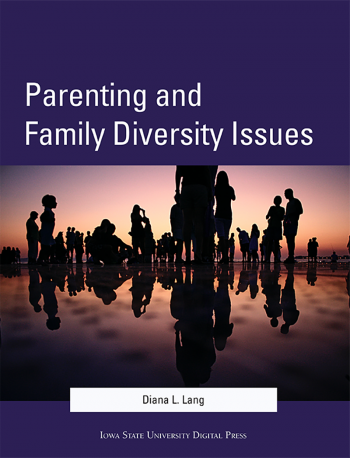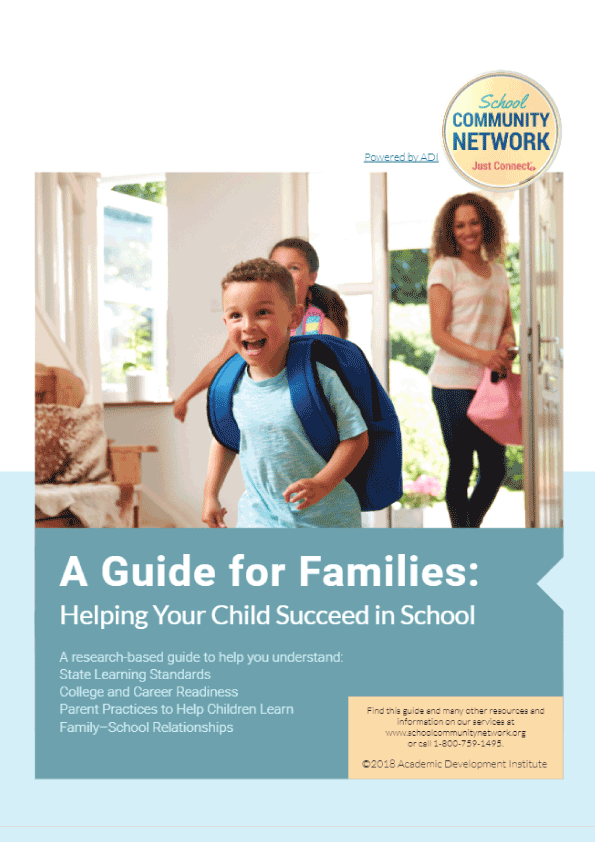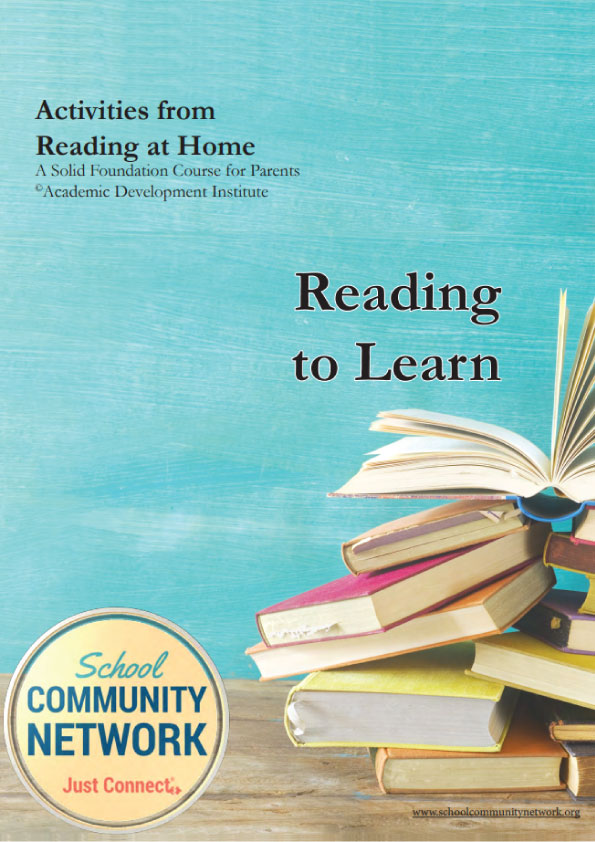All families want their children to succeed in school.
This guide is designed to give teachers, principals, and other school staff information and tips to partner with parents, grandparents, and other caregivers to improve every student’s potential for success in school from prekindergarten all the way through high school.
Solid research shows that children from homes where families are engaged with their children, other parents, and their children’s schools:
- Earn better grades,
- Get better test scores,
- Enjoy school more, and
- Are more likely to graduate from high school and attend college or technical school.
Becoming and Sustaining a Vibrant School Community
Too often, teachers and administrators report feeling less than well prepared to interact with and engage families in their children’s learning and to create a positive school climate. Other school staff—including but not limited to front office staff, paraprofessionals/aides, therapists and specialists, custodial and cafeteria staff, and bus drivers—often receive no training at all, and yet they are vital members of the school community and have an important role in making sure students and families feel welcome and respected. School leaders can use the suggested actions below to create a vibrant school community.
Creating a sense of community within the school
- Set the tone—have outsiders visit your building and offer feedback on how welcome they feel and then take steps for improvement—both in the physical aspects (signage, etc.) and in the way people interact.
- Convene groups with stakeholder representatives (parents, teachers, administrators, community members) to help facilitate shared leadership and common purpose.
- Jointly create policies that define roles and goals of the school community, then make plans with timelines to meet the goals.
- Offer opportunities for further education (for families and staff together, if possible).
- Provide multiple opportunities for association and shared celebration with the entire school community, including families, throughout the school year.
Reach out to all stakeholders
- Use multiple means to contact families and invite two-way communication.
- Conduct home visits (and/or meet families in their neighborhoods), using established best practices.
- Encourage informal home gatherings where parents gather in one parent’s home and someone representing the school is included, usually a teacher, to discuss supporting the purpose of the school.
- If the school has several immigrant families who come from more collectivistic cultures (compared with the individualistic U.S. culture), consider offering more group meetings rather than or in addition to individual conferences.
- Invite the community at large to become active in supporting the school community and to celebrate the school’s victories.
Provide professional development for effective communication with families
- Rehearse using everyday language without acronyms or educational jargon.
- Practice active listening techniques using role playing and other methods with attention also given to nonverbal communication.
- Use open-ended questions which are nonthreatening and encourage description.
- Promote empathetic understanding by using verbal reflection of content and feelings.
- Learn about students’ and families’ cultural norms that might affect communication; for example, nodding may or may not imply agreement.
Another example: School personnel born and raised in the U.S. expect to have eye contact during conversation as a basic sign of attention and respect from the listener. However, for many other cultures, the opposite is true— looking away or down shows respect and deference to the speaker. - Consider the wording of printed materials carefully, as words can be easily misinterpreted; for example, offering a workshop or tip sheet on “parenting” may insult families.
College and Career Readiness
Families’ unique knowledge of their children positions them to support their children’s learning and helps them look to the future with wonder and hope. The school can encourage families to explore questions with the child, such as: “What do I most enjoy learning about or doing?” and “Where will my education take me?”
Both families and teachers can help students see a connection between what they learn in school and how it may help them reach future goals. The many tips in the sections below will
help schools support families in getting a child ready for a career including the steps needed to begin—often a college or trade school, depending upon the career chosen.
COLLEGE AND CAREER READINESS
Teachers and counselors also want to help students plan for the future, whether that is how to thrive in the next school grade or in their plans after graduation. Staff can help bridge home and school using these tips:
- Let families know what is provided at school to help the students learn about career options.
- Explain to families how teachers help students connect school learning with everyday life, including possible future occupations or areas of service.
- Ensure teachers, counselors, or other leaders communicate with families in everyday language (avoiding jargon and using trained translators as needed) about what a child needs to do to prepare for a chosen or potential future path—selecting the right classes and activities to be on track may begin as early as fifth or sixth grade.
- Encourage families to talk with their child frequently about the future and how important attitudes and actions right now may be in reaching future goals and dreams.
- Explain to families how the school helps nurture personal competencies (cognitive, metacognitive, motivational, social/emotional) at school and what they can do to reinforce them at home.
Curriculum of the Home: Family Practices to Help Children Learn
The “curriculum of the home” is made up of the patterns of family life that support a child’s ability to learn in school. Parenting practices and the relationship families build with each child’s school help the child succeed. School personnel sometimes do not recognize the power of these practices and therefore do not communicate about them or support them with families. However, research has demonstrated that the subtle actions, conversations, and attitudes of families are the strongest predictor of student success.
- Every member of the school community, from the principal to the custodian, can understand and help in communicating to families their importance and value in the school community.
- Remind families just talking with their child often about their hopes and dreams for the future is important! They don’t have to understand the advanced math homework to help.
Encourage family discussions of books, TV programs, web content, games, etc. - Promote the sharing of family stories and traditions; they give a sense of meaning and belonging.
- Suggest that families establish a daily routine with regular mealtimes, bedtimes, homework/ study time, and outdoor play/exercise time.











